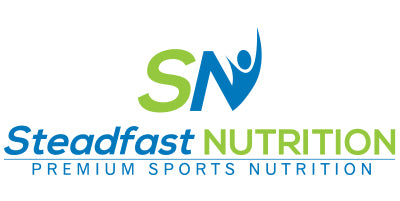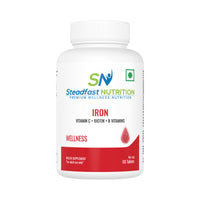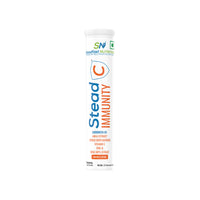Table of Content
1. What’s a low haemoglobin count?
2. Symptoms of low haemoglobin
3. What causes low haemoglobin levels?
4. Ways to Increase Haemoglobin Levels
- Increase Iron Intake
- Consume Vitamin C-Rich Foods
- Include Folate in the Diet
- Eat Pomegranate
- Consume Beetroot
- Add Legumes to Your Diet
- Include Watermelon
- Consume Black Sesame Seeds & Pumpkin Seeds
- Eat Dates, Raisins, and Figs
- Include Green Leafy Vegetables
5. Conclusion
6. FAQs
Health issues, such as haemoglobin deficiency, are common in today’s day and age modern lifestyle habits are leading to due poor food choices. Haemoglobin, an iron-rich protein in red blood cells, carries oxygen throughout the body and transports carbon dioxide to the lungs for expulsion. Low haemoglobin levels can cause fatigue, weakness, shortness of breath, headaches, and severe drops that may lead to anaemia. Anaemia is a significant health concern in India, especially among women, who have lower haemoglobin counts than men.
What’s a low haemoglobin count?
Haemoglobin is a globular protein available in red blood cells that transports oxygen to the body. Low haemoglobin levels, below 13.5 g/dL in men and 12 g/dL in women, can be caused by iron deficiency anaemia, poor diet, bone marrow disorders, inherited anaemic conditions like thalassemia, changes in stomach and intestinal lining, chronic conditions like chronic liver disease, chronic kidney disease, cancer, and heavy blood loss due to urinary tract infections or pregnancy. Normal haemoglobin levels are 14-18 g/dL for men and 12-16 g/dL for women. Maintaining proper levels through diet is crucial. If low haemoglobin is suspected, consult a healthcare professional and consider a complete blood count (CBC) test.
Symptoms of low haemoglobin
Symptoms may not be visible in mild anaemia but low haemoglobin levels for a prolonged duration - indicative of anaemia - can cause symptoms including difficulty breathing, pale skin and gums, fatigue, weakness, brittle nails, dizziness, and recurrent headaches. If left untreated, it may trigger critical symptoms like excessive bleeding, mouth ulcers, sore tongue and irregular heartbeat.
What causes low haemoglobin levels?
A low haemoglobin count, or anaemia, can be caused by various factors. Hemolysis is the premature destruction of red blood cells, occurring when red blood cells break up in the bloodstream or spleen, which can occur due to inherited conditions, autoimmune disorders, infections, or the side effects of certain medications. Here are some common reasons for low haemoglobin levels:
1. Nutritional deficiencies:
Anaemia often results from a lack of essential nutrients like iron, vitamin B12, and folate. These nutrients are vital for producing healthy red blood cells. Deficiencies in vitamin B12 or folic acid can alter the shape of red blood cells, making them less effective.
2. Iron-deficiency anaemia:
The most common type of anaemia, it occurs when the body lacks sufficient iron to produce haemoglobin. Blood loss is a frequent cause, but it can also happen if the body does not absorb enough iron, such as after gastric bypass surgery. A diet low in iron can also lead to this condition.
3. Blood loss:
Significant blood loss from injuries, surgeries, gastrointestinal bleeding, or heavy menstrual periods in women can cause anaemia. Examples include:
- Excessive menstrual bleeding
- Gastrointestinal bleeding from conditions like tumours, cancer or ulcers
- Overuse of aspirin or non-steroidal anti-inflammatory drugs (NSAIDs).
4. Chronic diseases:
Conditions like chronic kidney disease, gastrointestinal inflammatory disorders, and certain cancers can impair the body's ability to produce or maintain healthy red blood cells.
5. Bone marrow disorders:
Diseases affecting the bone marrow's ability to produce red blood cells, such as aplastic anaemia, myelodysplastic syndromes, and leukaemia, can lead to low haemoglobin levels.
6. Pregnancy:
The body requires more iron during pregnancy to support the growing foetus. If dietary intake is insufficient, anaemia can develop due to iron and folic acid deficiency. Moreover, there are increased chances of excessive bleeding during labour in lower levels of iron status.
7. Chronic infections:
Infections like malaria and certain parasitic infections can cause anaemia, reducing the RBC levels.
8. Autoimmune disorders:
Diseases like rheumatoid arthritis and lupus can cause the immune system to attack healthy red blood cells, leading to anaemia.
9. Haemorrhage:
Severe bleeding from trauma or internal injuries, major surgeries can rapidly decrease haemoglobin levels.
10. Certain medications:
Prolonged use of some medications can interfere with red blood cell production or cause haemolysis, leading to anaemia as a side effect.
Identifying the underlying cause of low haemoglobin levels is crucial for appropriate treatment and management. If you suspect anaemia or experience symptoms of low haemoglobin, seek medical advice for proper evaluation and diagnosis.
Ways to Increase Haemoglobin Levels
1. Increase Iron Intake
Iron is fundamental in haemoglobin production, and increasing iron intake can significantly improve haemoglobin levels. Iron-rich foods such as liver, organ meats, shellfish, beef, broccoli, kale, spinach, green beans, cabbage, beans, lentils, tofu, and fortified cereals, should be prioritised. Additionally, pairing these iron-rich foods with vitamin C sources like oranges, berries, bell peppers, or broccoli can enhance iron absorption. Steadfast Nutrition's Iron tablet can come in handy in times of fulfilment of daily nutrition.
2. Consume Vitamin C-Rich Foods
To increase haemoglobin levels, it is crucial to incorporate certain nutrients and foods into your diet. Firstly, consuming vitamin C-rich foods enhances non-heme iron absorption, which is essential for haemoglobin production. Foods like oranges, lemon, bell peppers, tomatoes, grapefruits, and berries are excellent sources of vitamin C and should be included in your daily diet. Vitamin C tablets are available in the market for replenishing vitamin levels, SteadC by Steadfast Nutrition is one such effervescent tablet that is refreshing in taste and contains a good amount of vitamin C (40 mg).
3. Include Folate in the Diet
Folate, a B vitamin, is also important for the production of red blood cells. A diet rich in folate can prevent folate deficiency anaemia and maintain healthy haemoglobin levels. Foods such as egg, beef, spinach, black-eyed peas, avocado, lettuce, rice, kidney beans, and peanuts are good sources of folate and should be consumed regularly.
4. Eat Pomegranate
Pomegranate is a beneficial fruit for increasing haemoglobin levels due to its high iron content. Vitamin C content in pomegranate helps absorb iron better. Drinking pomegranate juice or having the fruit can help ensure your haemoglobin levels are optimal.
5. Consume Beetroot
Beetroot is an excellent way to boost haemoglobin levels. Beetroot, rich in iron and folic acid, promotes a healthy blood count. Drinking beetroot juice or having it as a salad can help maintain optimal haemoglobin levels. This nutrient-dense vegetable also contains magnesium, and vitamins like B6, B12, and C, all of which contribute to increasing haemoglobin and regenerating red blood cells. Beetroot can be enjoyed raw in salads, cooked, or blended into juice for maximum health benefits.
6. Add Legumes to Your Diet
Legumes, including lentils, chickpeas, and beans, are also significant contributors to increasing haemoglobin levels due to their iron, protein and folic acid content. Including these in your diet can boost red blood cell production.
7. Include Watermelon
Watermelon is a fruit that aids in increasing haemoglobin levels due to its iron and vitamin C content, which enhances iron absorption.
8. Consume Black Sesame Seeds & Pumpkin Seeds
Black sesame seeds are an excellent source of iron, making them a great addition to your diet to boost iron intake. They are also rich in calcium, magnesium, copper, zinc, selenium, and vitamins B6, E, and folate. Alternatively, mixing a tablespoon of dry roasted black sesame seeds with a teaspoon of honey or sprinkling black sesame seeds over cereal, oatmeal, yogurt, or fruit salads can be beneficial. White sesame seeds, loaded with iron, magnesium, copper, zinc, selenium, vitamin B6, and folate, can also help boost haemoglobin levels. They can be consumed raw, as ladoos, or sprinkled over salads.
Pumpkin seeds provide a sufficient amount of iron, magnesium, and manganese. You can easily incorporate these nutrient-packed seeds into your diet by sprinkling them over salads, adding them to smoothies, or using them in a variety of dishes.
9. Eat Dates, Raisins, and Figs
Dates, raisins, and figs are beneficial for their combination of iron and vitamin C. Consuming a handful of dried figs and raisins, along with two or three dates in the morning, can provide instant energy and improve haemoglobin levels.
10. Include Green Leafy Vegetables
Green leafy vegetables such as spinach, mustard greens, celery, and broccoli are rich vegetarian sources of iron and other vital nutrients like vitamin B12 and folic acid. These vegetables should be a part of your daily diet. It is advisable to consume cooked spinach rather than raw, as oxalic acid in raw spinach can hinder iron absorption. Broccoli, being rich in iron, folic acid, magnesium, and vitamins A and C, also supports haemoglobin production and overall health.
Conclusion
Low haemoglobin can be aggravated by bleeding issues, poor red blood cell production, and nutrient deficiencies. Symptoms include headaches, fatigue, rapid heartbeat, and pale skin. Deficiency can be overcome by eating plenty of iron-rich foods. Treatments involve iron supplements, iron therapy, blood transfusions, and addressing the underlying cause.
Consult a healthcare provider to identify the cause and appropriate treatment for low haemoglobin. Additional treatments, like iron supplementation, might be required for pregnant women or individuals with chronic conditions.
FAQs
1. How much time does it take to raise haemoglobin levels?
Raising haemoglobin levels varies by method: dietary changes and iron supplements typically take several months or longer while medications may act within a few weeks. In-hospital treatments, like blood transfusions, can raise levels immediately.
2. What drink raises haemoglobin?
Besides iron-rich foods, certain drinks can also help increase haemoglobin levels. These include beet juice, prune juice, pomegranate juice, pumpkin juice, watermelon juice, apple juice, spinach smoothie, and mulberry smoothie.
3. What haemoglobin level is normal?
Normal haemoglobin levels vary based on age, sex, and overall health:
- Adult Men: 14 to 18 grams per decilitre (g/dL)
- Adult Women: 12 to 16 g/dL
- Pregnant Women: 12 to 16 g/dL
These ranges can vary slightly depending on the laboratory and measurement techniques used.
4. Why is haemoglobin important?
Haemoglobin, an iron-containing protein in red blood cells, is crucial for transporting oxygen from the lungs to body tissues and carrying carbon dioxide back to the lungs for exhalation. It maintains blood pH balance and facilitates respiration.



